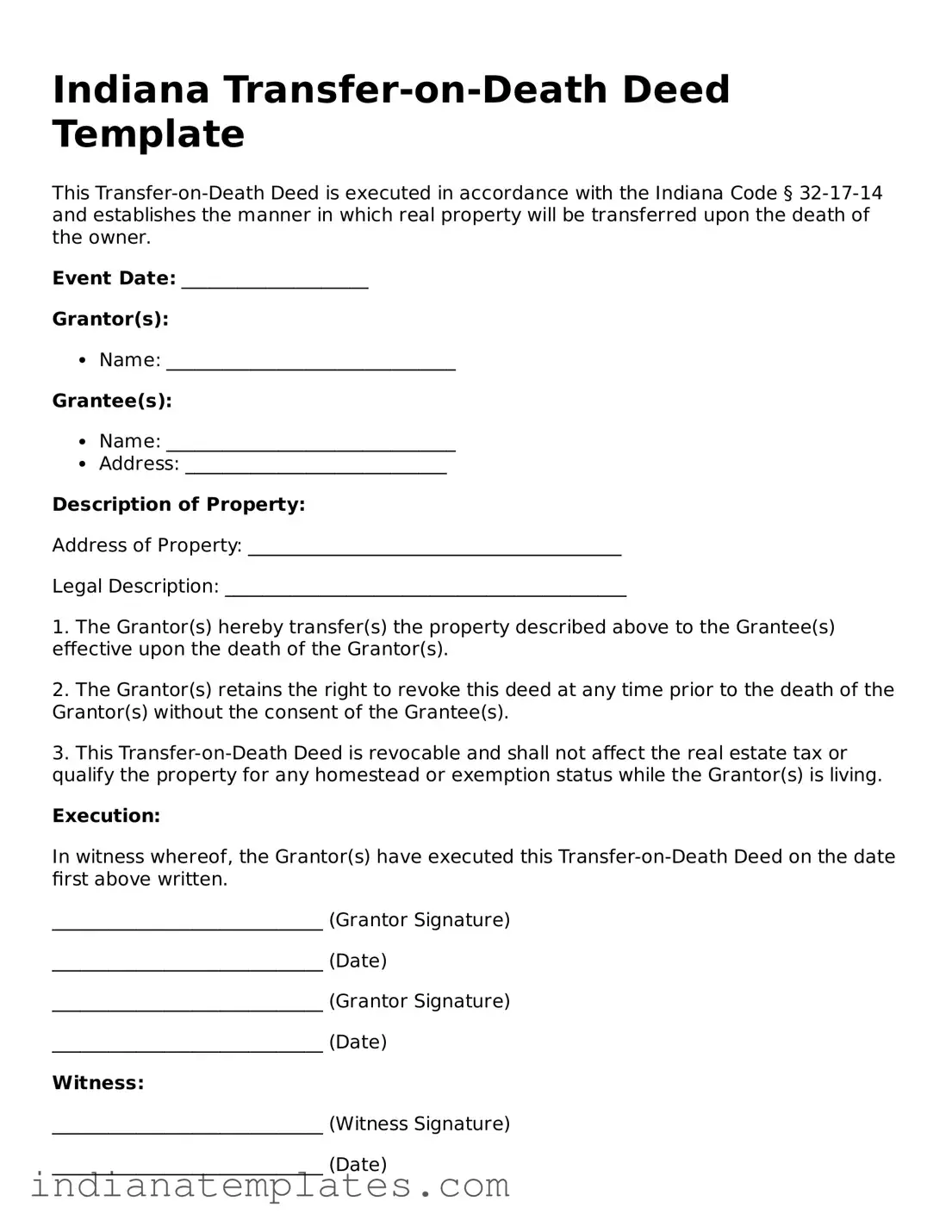What is an Indiana Transfer-on-Death Deed?
The Indiana Transfer-on-Death Deed is a legal document that allows a property owner to designate one or more beneficiaries to receive their real estate upon their death. This deed enables the transfer of property without going through probate, simplifying the process for heirs and ensuring a smoother transition of ownership.
How does a Transfer-on-Death Deed work?
When the property owner passes away, the designated beneficiaries automatically gain ownership of the property. The deed must be properly executed and recorded before the owner's death to be effective. Once recorded, the beneficiaries can claim the property without needing to go through the lengthy probate process.
Who can be named as a beneficiary in the deed?
Any individual or entity can be named as a beneficiary in an Indiana Transfer-on-Death Deed. This includes family members, friends, or even organizations. However, it is essential to ensure that the beneficiaries are clearly identified to avoid any confusion or disputes later on.
Can I change or revoke a Transfer-on-Death Deed?
Yes, property owners have the right to change or revoke a Transfer-on-Death Deed at any time before their death. This can be done by creating a new deed that explicitly revokes the previous one or by recording a formal revocation document. It is crucial to follow proper procedures to ensure that the changes are legally recognized.
Is there a cost associated with recording the Transfer-on-Death Deed?
Yes, there are typically fees associated with recording a Transfer-on-Death Deed, which can vary by county. It is advisable to check with the local county recorder's office for the exact fees and any additional requirements that may apply.
Do I need an attorney to create a Transfer-on-Death Deed?
While it is not legally required to have an attorney to create a Transfer-on-Death Deed, consulting with a legal professional can be beneficial. An attorney can provide guidance on the implications of the deed, help ensure that it is properly executed, and address any specific concerns regarding your estate planning needs.
What happens if a beneficiary predeceases the property owner?
If a beneficiary named in the Transfer-on-Death Deed dies before the property owner, the share designated for that beneficiary typically lapses. The property owner can choose to update the deed to name a new beneficiary or allow the remaining beneficiaries to inherit the property. It is essential to review and update the deed as circumstances change.
Are there any tax implications associated with a Transfer-on-Death Deed?
Generally, there are no immediate tax implications when using a Transfer-on-Death Deed. However, the property may be subject to estate taxes upon the owner's death, depending on the overall value of the estate. Beneficiaries should consult with a tax professional to understand any potential tax liabilities they may face when inheriting property.
Can I use a Transfer-on-Death Deed for all types of property?
In Indiana, a Transfer-on-Death Deed can only be used for real estate, such as residential or commercial properties. It cannot be applied to personal property, bank accounts, or other types of assets. For those assets, different estate planning tools may be more appropriate.
